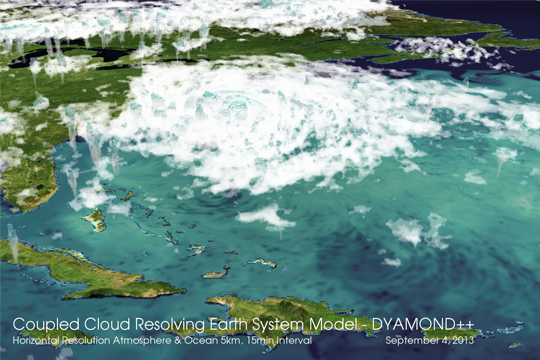26.11.2020
Details
Date: Thursday, 17 December 2020
Time: 13:30 - 13:33 CET
Title: IN047-11 - The ATMODAT Standard enhances FAIRness of Atmospheric Model data
Authors: Daniel Heydebreck (German Climate Computing Centre (DKRZ)), Anette Ganske (Technische Informationsbibliothek (TIB)), Amandine Kaiser (German Climate Computing Centre (DKRZ)), Heinke Schluenzen (University of Hamburg), Vivien Voss (University of Hamburg), Angelina Kraft (Technische Informationsbibliothek (TIB))
Link: https://agu.confex.com/agu/fm20/meetingapp.cgi/Paper/674339
Poster
Abstract
Within the AtMoDat project (Atmospheric Model Data, www.atmodat.de), a standard has been developed which is meant for improving the FAIRness of atmospheric model data published in repositories. Atmospheric model data form the basis to understand and predict natural events, including atmospheric circulation, local air quality pattern and the planetary energy budget. Such data should be made available for evaluation and reuse by scientists, the public sector, and relevant stakeholders.
Atmospheric modelling is ahead of other fields in many regards towards FAIR (Findable, Accessible, Interoperable, Reusable, see e.g. Wilkinson et al., 2016, doi:10.1101/418376) data: many models write their output directly into netCDF or file formats that can be converted into netCDF. NetCDF is a non-proprietary, binary and self-describing format, ensuring interoperability and facilitating reusability. Nevertheless, consistent human- and machine-readable standards for discipline-specific metadata are also necessary. While standardisation of file structure and metadata (e.g. the Climate and Forecast Conventions) is well established for some subdomains of the earth system modelling community (e.g. the Coupled Model Intercomparison Project, Juckes et al, 2020, doi:10.5194/gmd-13-201-2020), other subdomains are still lacking such standardisation. For example, standardisation is not well advanced for obstacle-resolving atmospheric models (e.g. for urban-scale modeling).
The ATMODAT standard, which will be presented here, includes concrete recommendations related to the maturity, publication and enhanced FAIRness of atmospheric model data. The suggestions include requirements for rich metadata with controlled vocabularies, structured landing pages, file formats (netCDF) and the structure within files. Human- and machine readable landing pages are a core element of this standard, and should hold and present discipline-specific metadata on simulation and variable level.
